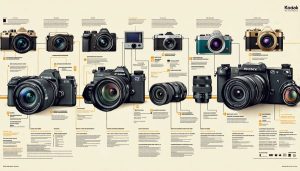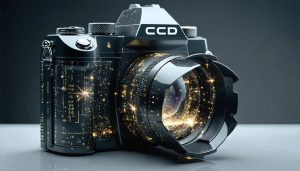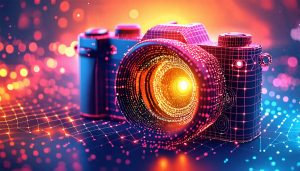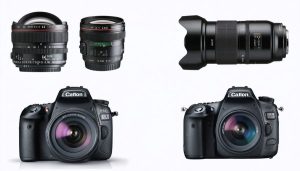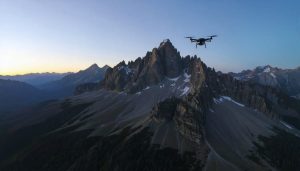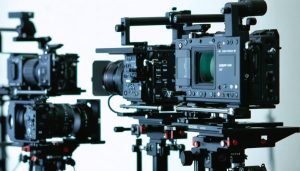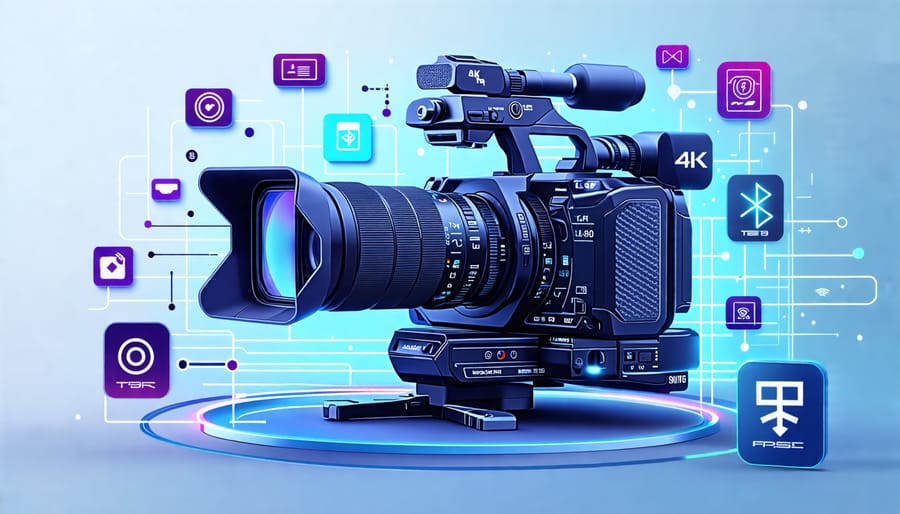
Evaluate sensor type and size to determine the camera’s potential for capturing high-quality video in various lighting conditions. Opt for models with larger sensors, such as full-frame or APS-C, for better low-light performance and depth of field control. Prioritize cameras with advanced stabilization technology to achieve smooth, professional-looking footage without needing additional gear. Investigate the available recording formats and resolutions; ensure the camera supports at least 4K to future-proof your purchase, offering options for higher dynamic range and more flexible editing. Consider connectivity features, like Wi-Fi and Bluetooth, for seamless file transfer and remote control capabilities, enhancing both convenience and workflow efficiency.
The Evolution of Video Cameras: From Analog to Digital
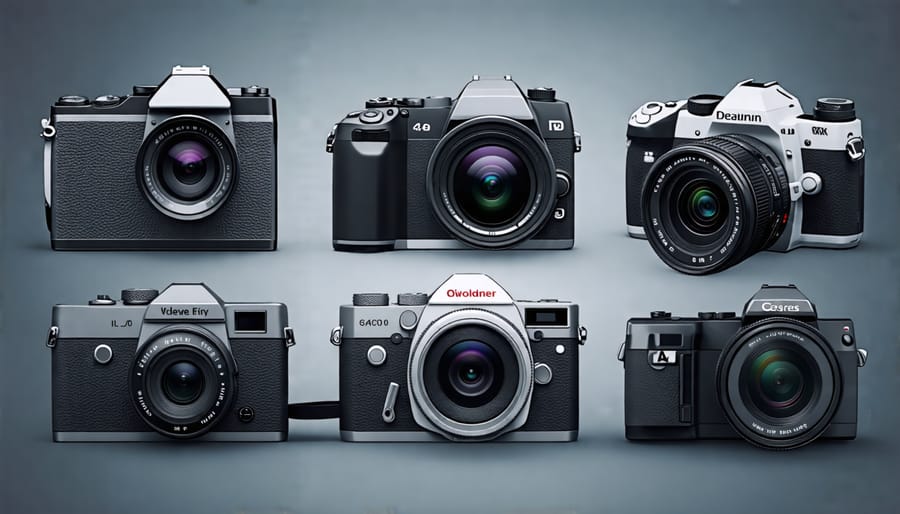
The Shift to Digital
The shift to digital technology marked a revolutionary turning point in the history of video cameras, opening a world of possibilities that transformed how both hobbyists and professionals capture their stories. One of the earliest landmark moments occurred in 1981, with Sony’s introduction of the first electronic still camera, the Mavica. Though not a true digital camera by today’s standards, it laid the groundwork for the subsequent digital revolution.
As the ’90s progressed, major players like Sony, Panasonic, and Canon began rolling out digital camcorders that replaced analog tapes with digital storage, marked by milestones like the Sony DCR-VX1000 in 1995. This handy gadget was not only immensely popular among home users but also captured the imagination of indie filmmakers with its ease of use and capacity for high-quality recording.
Fast forward to the early 2000s, and high-definition (HD) video was becoming the standard, driven by the desire for sharper images and enhanced viewing pleasure. The advent of the DSLR video capability—first successfully integrated by Nikon in their D90 model in 2008—further expanded the storytelling toolkit, allowing photographers to seamlessly transition between video and stills.
In today’s world, digital video cameras benefit from astonishing advancements such as 4K and 8K resolutions, impressive low-light capabilities, and unprecedented stabilization technologies. For the modern videographer, these features mean less technical limitation and more creative freedom. Thus, choosing the right video camera often involves considering what fits best with your creative vision, storytelling needs, and even your planned distribution platforms. Exploring the vast array of features can feel overwhelming, but knowing the history gives crucial insight into how to make an informed selection that aligns perfectly with your needs.
Features Defining Modern Video Cameras

High Resolution and Frame Rates
High resolution and high frame rates have dramatically redefined what we consider top-tier video quality in modern cameras. For years, the apex of video resolution was 1080p, but today, 4K and even 8K resolutions are becoming the norm. These higher resolutions allow photographers and videographers to capture stunning levels of detail, providing a truly immersive viewing experience. Imagine filming a beach on a sunny day: every grain of sand, every ripple in the water, and each fluttering leaf is captured with crystal clarity. The enhanced quality allows for more creative flexibility, from impressive crop options in post-production to creating cinematic, high-definition films.
Frame rates, too, play a pivotal role in modern video quality. While the traditional 24 frames per second (fps) mimics the natural motion of film, higher frame rates—think 60 fps, 120 fps, or more—offer ultra-smooth motion rendering. This can be crucial for capturing fast-moving subjects, such as athletes in action or a hummingbird in flight, where every moment counts. The result is footage that feels fluid and dynamic, perfect for slow-motion editing that adds dramatic flair to any production.
As a hybrid of art and technology, choosing the right camera involves balancing these features against your unique needs. Whether you aim to capture breathtaking landscapes or the hustle of urban life, understanding the capabilities of high resolution and frame rates allows you to select a camera that elevates your work to new heights.
Connectivity and Integration
Modern video cameras are transforming the way photographers and videographers work, thanks to impressive connectivity and integration features designed to enhance user experiences. As technology progresses, wireless capabilities have become a fundamental part of video cameras, allowing seamless transfer of files without the hassle of cords and cables. Wi-Fi and Bluetooth technology are prevalent, making it remarkably easy to connect your camera to smartphones, tablets, or computers. This convenience is particularly beneficial for photographers who need to quickly edit or share footage on the go.
App integration is another game-changer. Many modern video cameras come with dedicated apps that provide remote control capabilities, allowing you to adjust settings, capture images, or start and stop recording from your smartphone. This feature is invaluable for content creators who shoot alone or need to capture footage from difficult angles. For instance, using a mobile device to frame the perfect shot or adjust the focus without physically touching the camera can be incredibly freeing.
These advancements also contribute to a more streamlined workflow. By integrating cameras with cloud services, you can securely store your work, ensuring it’s accessible whenever inspiration strikes or a project demands immediate attention. These connectivity upgrades are not just about convenience; they’re about enabling creativity and freeing photographers to focus on their artistic vision without technical distractions.
How to Choose the Right Video Camera for You
Assessing Your Needs
Understanding your specific needs is the first step in choosing the right modern video camera. Whether you’re a professional photographer, an enthusiast looking to upgrade your gear, or a hobbyist curious about your options, knowing what you want to achieve can significantly influence your decision.
Consider what types of projects you plan to tackle. If you’re venturing into high-resolution filmmaking or capturing intricate details in your photography ecosystem, look for cameras with 4K or even 8K capabilities. Advanced models offer stunning clarity and more flexibility in post-production—ideal for documentaries, cinematic projects, or high-quality YouTube content.
For those focused on travel vlogs or outdoor adventures, portability might be your priority. Compact action cameras with robust stabilization features can handle dynamic movements and harsh conditions. Picture yourself hiking through a dense forest or skiing down a slope; these cameras can withstand and capture these exhilarating moments without weighing you down.
If you’re a professional photographer concerned about versatility, hybrid cameras that excel in both photography and videography might be your great companion. Models with interchangeable lenses and a variety of shooting modes allow you to switch seamlessly between taking stills and recording video, all while maintaining superior image quality.
Remote content creators, like live streamers, might find cameras with exceptional autofocus performance and low-light capabilities more finetuned for their requirements. Think of those live sessions in dimly lit environments where maintaining sharpness can make all the difference.
Ultimately, each camera type has its strengths tailored to different needs. Balancing the spectrum of features with your specific use case will not only enhance your creativity but also ensure your investment aligns perfectly with your aspirations.
Understanding Price vs. Features
When looking to invest in a modern video camera, striking a balance between price and features is crucial. The market offers a wide range of options, from budget-friendly models to high-end gear with all the bells and whistles. It’s all about matching your specific needs with the right set of features without breaking the bank.
For those dabbling in videography or even established professionals seeking a secondary camera, exploring less-costly cameras can be an excellent starting point. These options often provide a solid mix of essential features without the hefty price tag. Consider what you genuinely need: Is 4K resolution a must-have, or will 1080p suffice? Do you require advanced autofocus capabilities, or will manual focus meet your creative needs?
Let’s bring this to life with a real-world example. Imagine you’re a travel vlogger. Compactness and weight are your priorities, along with decent low-light performance and good audio quality. You might forego interchangeable lenses typically found in pricier models, opting instead for a robust point-and-shoot camera with a fixed lens.
Ultimately, the key is to identify which features will enhance your storytelling and artistic vision. Look beyond price alone; aim for a camera that inspires creativity, aligns with your filmmaking goals, and fits comfortably within your budget. Whether you’re a curious hobbyist or a seasoned filmmaker, there’s a model out there tailored for you.
Popular Brands and Models in 2023
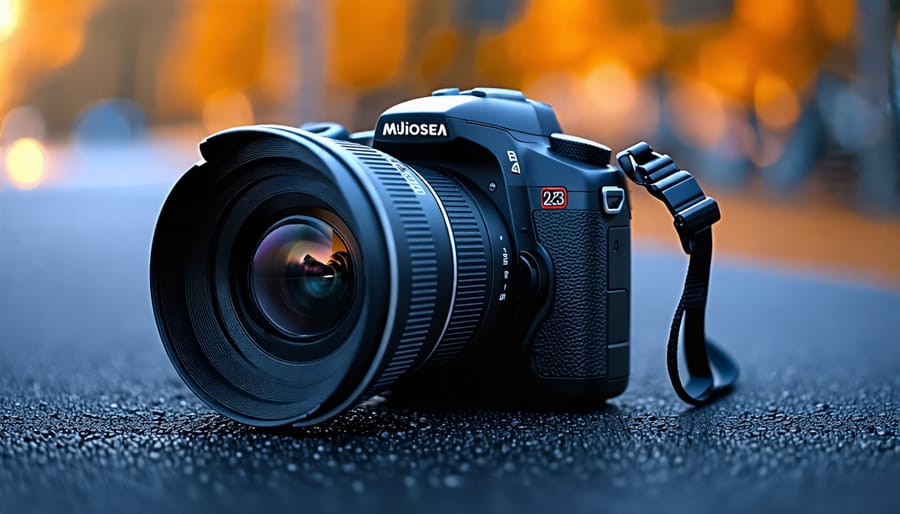
Top Contenders
When it comes to modern video cameras, the market is brimming with impressive contenders that cater to a wide range of needs and preferences. For those venturing into the world of video recording or considering an upgrade, some standout models are worthy of attention.
Sony’s Alpha series continues to push the boundaries of what’s possible in video technology. The Alpha 7S III is a favorite among videographers for its exceptional low-light performance and 4K capabilities, making it a top choice for filmmakers seeking versatility and image clarity in challenging lighting conditions.
Canon’s EOS R5, part of the growing universe of best mirrorless cameras, boasts a powerful blend of features including 8K video recording and robust autofocus capabilities, making it a compelling option for both enthusiasts and seasoned professionals. Its customizable controls and lightweight design offer both convenience and high-level performance.
Panasonic’s Lumix GH6 is a game-changer for those who prioritize video creativity. Known for its video-centric design, it delivers 5.7K video, ProRes recording, and powerful in-body stabilization. It’s perfect for capturing stunning action sequences or intricate detail in cinematic projects.
For an entry point into cinema-quality capture, Blackmagic Design’s Pocket Cinema Camera 6K is hard to beat. Its advanced digital film capabilities provide incredible dynamic range and color science, loved by budding filmmakers aiming to achieve a distinctive visual style without breaking the bank.
Each of these cameras offers unique features tailored to different shooting scenarios, whether it’s filming a thunderstorm’s dramatic play of light and shadow or the candid beauty of everyday life. With technology advancing rapidly, keeping an eye on these remarkable models can help you make an informed choice based on your specific needs and creative ambitions.
Conclusion: The Future of Video Cameras
As we gaze into the future of video camera technology, it’s clear that exciting times lie ahead. With rapid advancements in artificial intelligence, video cameras are evolving to offer features like real-time scene recognition and auto-adjusting settings, making it easier than ever for photographers to capture the perfect shot. Moreover, the emergence of compact, lightweight designs in the world of mirrorless advantages is reshaping the way both enthusiasts and professionals approach their art.
In preparation for these innovations, photographers should stay informed and open-minded about embracing new tools and techniques. Investing time in workshops or online courses focused on emerging technologies can provide a head start in understanding how these advancements can enhance your photographic journey. Furthermore, staying connected with a community of like-minded individuals can offer practical insights and inspire creative applications of new technology.
As camera manufacturers continue to push the boundaries, the integration of advanced computational abilities and improved connectivity will only expand the possibilities for storytelling and artistic expression. Whether you’re a seasoned professional or an eager hobbyist, staying educated and adaptable will empower you to make the most of these future innovations, ensuring that your work remains both cutting-edge and personally fulfilling.

